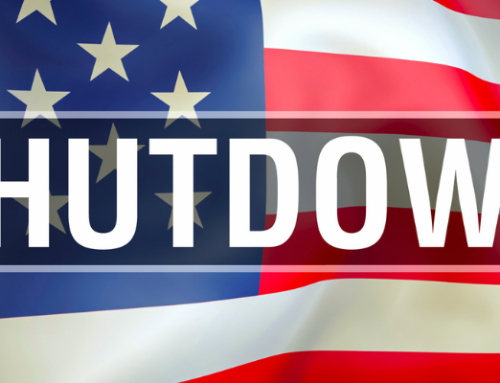Key points covered in this article:
- The One Big Beautiful Bill Act (OBBBA) introduces payroll changes starting in 2025, including new tax deductions for tips and overtime pay, and adjustments to 1099 reporting thresholds. Employers must review compensation tracking and reporting systems to comply.
- Key updates include a $25,000 annual deduction for qualified tips and a $12,500 deduction for overtime pay, both with income phase-outs starting at $150,000. Employers must file detailed information returns with the IRS.
- The 1099-K reporting threshold reverts to $20,000 and 200 transactions in 2025, while new thresholds for 1099-MISC and 1099-NEC take effect in 2026. Businesses should prepare for these changes to ensure compliance.
A series of payroll-related changes are taking effect under the One Big Beautiful Bill Act (OBBBA), beginning in 2025. The law introduces new tax deductions for tips and overtime pay, and it adjusts the reporting thresholds for issuing 1099 forms. While some of the changes are already in effect and others are coming soon, employers will need to review how compensation is tracked, classified, and reported.
Businesses in hospitality and construction may experience the most immediate impact, but the changes apply more broadly. Any company that processes hourly wages or contractor payments will want to take time to understand what’s ahead and determine whether current systems are set up to handle the new requirements.
Key Payroll Changes Under OBBBA
The OBBBA includes several payroll provisions that apply to employers, workers, and independent contractors. Although the new tax deductions are taken on individual returns, businesses are responsible for tracking and reporting the information that makes those deductions possible. In some cases, that could mean updating payroll systems or reporting procedures.
The following sections outline the most relevant updates for business owners, including eligibility criteria, reporting requirements, income phase-outs, and expected IRS guidance.
No Tax on Tips
- New Deduction:
-
- Effective 2025–2028, employees and self-employed individuals may deduct qualified tips received in occupations listed by the IRS as customarily and regularly receiving tips and that are reported on Form W-2.
-
- Qualified tips include voluntary cash or charged tips received directly or through tip sharing.
- Maximum Deduction:
-
- $25,000 annually; for self-employed, deduction cannot exceed net income from the trade/business where tips were earned (before this deduction).
- Income Phase-Out:
-
- Begins at modified adjusted gross income over $150,000 ($300,000 for joint filers).
- Eligibility:
-
- Available to both itemizing and non-itemizing taxpayers.
-
- Not available to self-employed individuals or employees working in Specified Service Trade or Business (SSTB) under section 199A.
-
- Taxpayers must include Social Security Number on return and file jointly if married.
- Reporting Requirements:
-
- Employers/payors must file information returns with IRS (or SSA) and provide statements to employees reflecting tips and recipient occupation.
- IRS Guidance:
-
- By October 2, 2025, IRS will publish a list of qualifying occupations who customarily receive tips.
- The IRS will provide transition relief for tax year 2025 for taxpayers claiming the deduction and for employers and payors subject to the new reporting requirements.
No Tax on Overtime
- New Deduction:
-
- Effective 2025–2028, individuals may deduct the portion of overtime pay exceeding regular pay rate (e.g., the “half” portion of “time-and-a-half” pay) required by FLSA and reported on W-2, 1099, or other specified statements.
- Maximum Deduction:
-
- $12,500 annually ($25,000 for joint filers).
- Income Phase-Out:
-
- Begins at modified adjusted gross income over $150,000 ($300,000 for joint filers).
- Eligibility:
-
- Available to both itemizing and non-itemizing taxpayers.
-
- Taxpayers must include Social Security Number on return and file jointly if married.
- Reporting Requirements:
-
- Employers/payors must file information returns with IRS (or SSA) and furnish statements showing total qualified overtime compensation paid.
- IRS Guidance:
- Under a transition rule for 2025, an employer “may approximate” on employees’ W-2s the amount of qualified overtime compensation under “any reasonable method to be specified” by the IRS.
IMPORTANT NOTE ON TAX WITHHOLDINGS:
Employers should continue to withhold federal income taxes, (including Social Security and Medicare taxes) on both tips and overtime pay in accordance with existing law through the end of 2025. Employees will reconcile any deductions when they file their annual 1040 income tax returns. Beginning in 2026, employers will need to adjust their income tax withholding for qualified tips and overtime based on future procedures issued by the IRS.
Changes to 1099 Reporting Thresholds
- 1099-K Threshold and Issuance:
-
- Repeals the $600 threshold set by the American Rescue Plan Act of 2021.
-
- Restores the threshold to $20,000 and 200 transactions starting in 2025.
- Taxpayers should receive Form 1099-K only if they meet the applicable threshold.
- The previously scheduled drop to $600 threshold for 2026 and beyond was reversed.
- 1099-MISC and 1099-NEC Thresholds effective for tax year 2026:
-
- New $2,000 threshold takes effect for tax year 2026.
-
- Threshold will be adjusted annually for inflation beginning in 2027.
Conclusion
The payroll provisions under OBBBA may require updates to software, time tracking procedures, or contractor onboarding. Employers who take time now to evaluate their current approach will be in a better position to comply with the new requirements and avoid disruptions later in the year. For more information on these new rules and how they may apply to your business, contact Joanne Wolfley, Director at PBMares.





